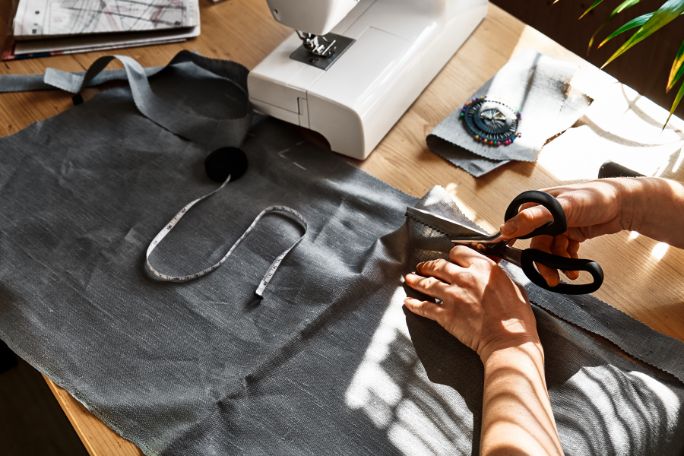Lesson summary
In this, the final of five lessons, students will attempt to define ‘sustainable fashion’ and explore the solutions to these issues being initiated by First Nation creative entrepreneurs such as Ngali, Aarli and Clothing the Gap.
Learning intentions:
Students will...
- be able to describe the characteristics of a sustainable fashion business.
Success criteria:
Students can...
- work independently and collaboratively
- undertake research
- use economic and business knowledge, concepts, terms and research findings to create descriptions and explanations
Lesson guides and printables
Curriculum links
Select your curriculum from the options below.
Lesson details
Skills
This lesson is designed to build students’ competencies in the following skills:
- creativity
- critical thinking
- collaboration
- communication
- curiosity
- digital literacy
- global citizenship
- problem solving
- reflection
Curriculum Mapping
Australian Curriculum (v9.0) content description:
Year 8 Economics and Business:
- how markets influence decisions about the allocation of resources to the production of goods and services, and the effect of prices on these decisions (AC9HE8K01)
- how First Nations Australian businesses and entrepreneurs develop opportunities in the market (AC9HE8K03)
General capabilities: Critical and Creative Thinking, Digital Literacy, Personal and Social Capability
Cross-curriculum priority: Aboriginal and Torres Strait Islander Histories and Cultures, Sustainability
Relevant parts of Year 8 achievement standards: Students develop a range of questions to investigate an economic and business issue. They locate, select and organise relevant information and data. They interpret information and data to identify economic and business issues and trends, and describe economic cause-and-effect relationships. They develop a response to an economic and business issue. They identify and evaluate potential costs and benefits. Students use economic and business knowledge, concepts, terms and research findings to create descriptions and explanations.
UN Sustainable Development Goals
UN SDG 12: Ensure sustainable consumption and production patterns
- Target 12.1: Implement the 10-Year Framework of Programmes on Sustainable Consumption and Production Patterns, all countries taking action, with developed countries taking the lead, taking into account the development and capabilities of developing countries
Resources Required
- Device to undertake research
- Diagram of the circular economy model
- Student worksheet
Additional Info
This unit of work examines the fast fashion industry, its contributions to the economy, its impacts and solutions for reform. Later in the unit, students will explore the solutions to these issues being initiated by First Nation creative entrepreneurs such as Ngali, Aarli and Clothing the Gap.
Australians purchase on average 56 items of new clothing each year. There is no national approach to textile waste or reprocessing. Textile waste is a national problem of massive proportions, with 200,000 tonnes of clothing and textile waste ending up in landfill.
In May 2023, the Australian Federal Government announced the National Clothing Product Stewardship Scheme. The scheme is designed to reduce the environmental impacts of the clothing industry through industry players acting in a collaborative and focused way. Companies, organisations and individuals have been invited to pledge their support to the scheme, which aims to see the Australian textile industry become net zero by 2050.
In this, the third of five lessons, students will appreciate that the issue of fast fashion is global, complex and multifaceted. They will understand how the industry contributes to a global economy and appreciate how the linear supply chain must be reformed to a more circular economy. They will consider what small act they could make to move towards this change.
Level of teacher scaffolding: medium - teachers will need to facilitate class discussion and supervise student research.
Related Professional Development
Create a Culture for Change (Cool+)
Quick Summary: This course will help you to tackle the tricky changes we can make for a better world, and how to guide students through this process as well.


Welcome back!
Don't have an account yet?
Log in with:
Create your free Cool.org account.
Many of our resources are free, with an option to upgrade to Cool+ for premium content.
Already have an account?
Sign up with:
By signing up you accept Cool.org's Terms and Conditions(Opens in new tab) and Privacy Policy(Opens in new tab).